The QNAP TS-h2287XU-RP-E2378-64G is a very cool NAS with a very long engineering name. While this 3U unit will be primarily marketed as a NAS, this is one of those occasions where we think that the price (currently $6999 via B&H Photo Affiliate link) and capabilities put it into a class beyond what many think of as a simple ZFS NAS. In this review, we are going to see why, and it is more than just the 2.5GbE and 10GbE onboard.
QNAP TS-h2287XU-RP-E2378-64G External Hardware Overview
The first thing one will notice about this unit is its size. This is a 3U storage server that is 21.69in deep. One of the strange things about this unit is that it is a rackmount unit, but the rails are not included. Instead, they are a $99 option with part number RAIL-B02. At around $7000, these should be included.
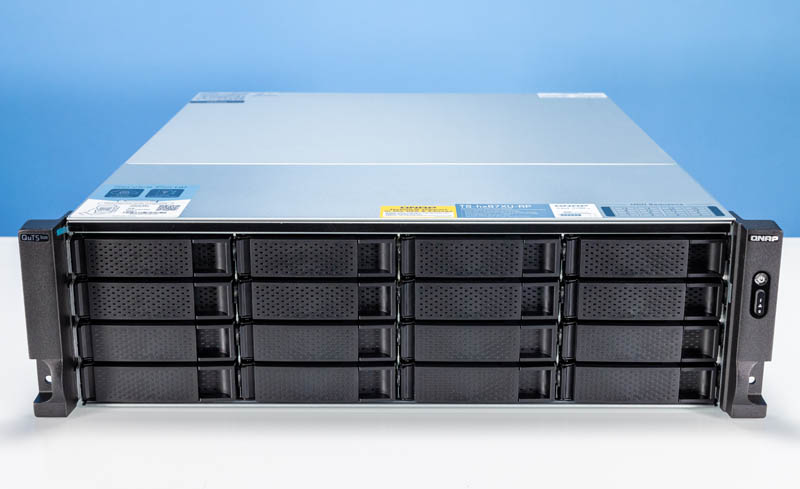
Pulling the drive trays out, we can see a nice backplane with plenty of room for airflow.
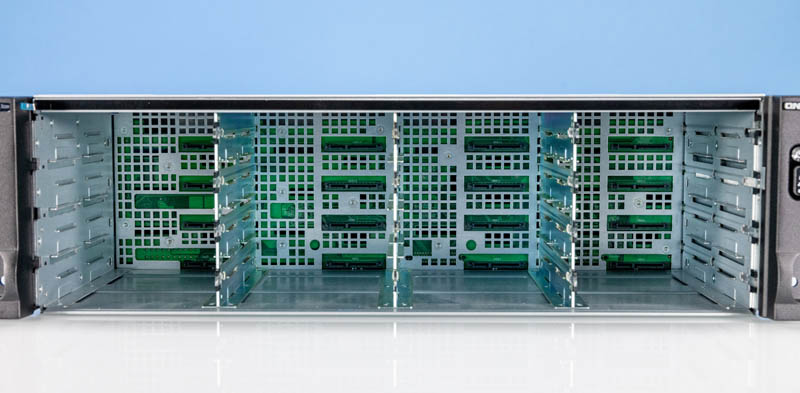
The front of the system has 16x hot-swap drive bays. These are SATA and can handle 3.5″ or 2.5″ drives. We suspect most users in this class of system will want 3.5″ drives since there are plenty of 2.5″ bays elsewhere. That flexibility of 3.5′ or 2.5″ unfortunately comes at a cost. The drive trays are not toolless. The vast majority of servers we reviewed in 2021-2022 have had toolless drive bays. It was almost shocking to see bags of screws in the box. QNAP needs these to be toolless to keep up with other data center gear.
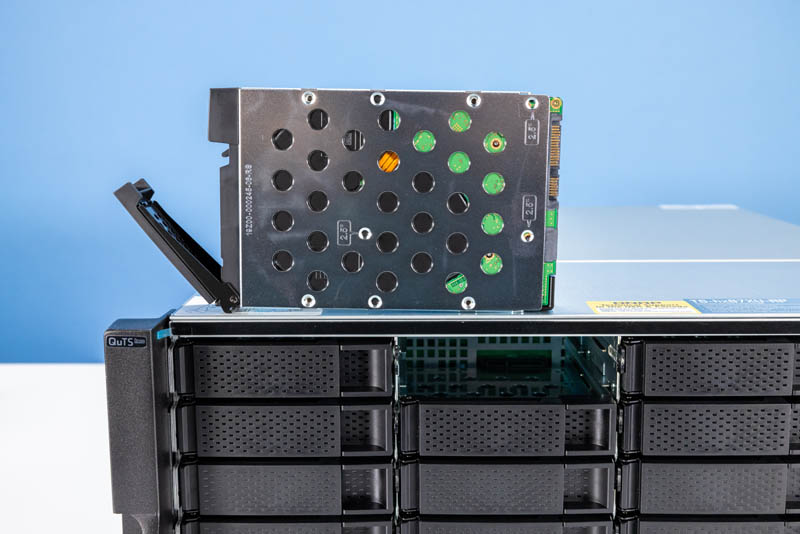
On the right of the chassis, we have power and status LEDs. Something also interesting about this is that the system did not start up when power supplies were plugged in. Instead, one has to turn the unit on manually. Again, that is a difference compared to most servers we review.
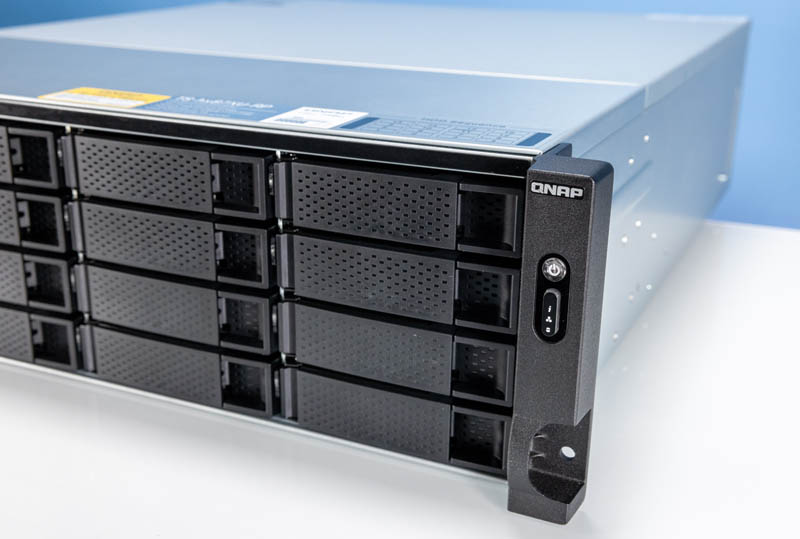
On the left side, there is a rack ear.
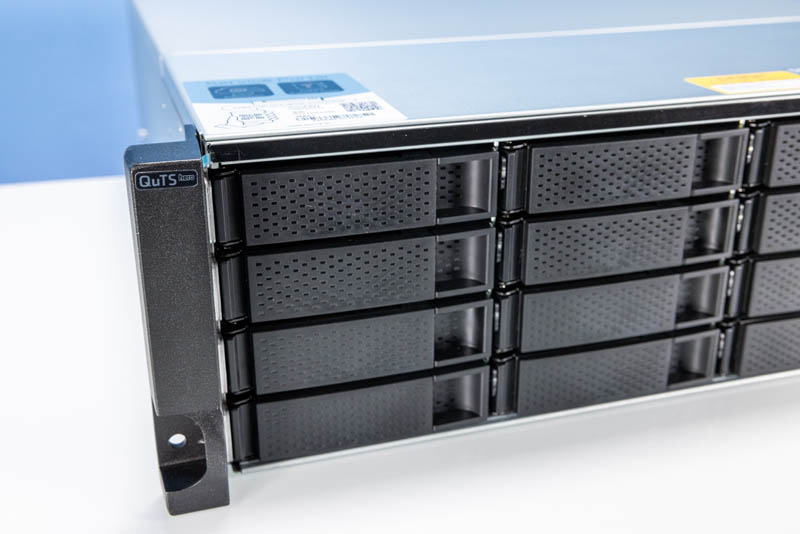
Something very important and worth noting is just the labeling. QNAP does a great job with QR codes to help set up, MAC address documentation, and even the hard drive sequence label that shows which drive is where. While this may seem like a minor feature, it is something that would otherwise take time to document or simply go undocumented. With storage, this labeling is essential.
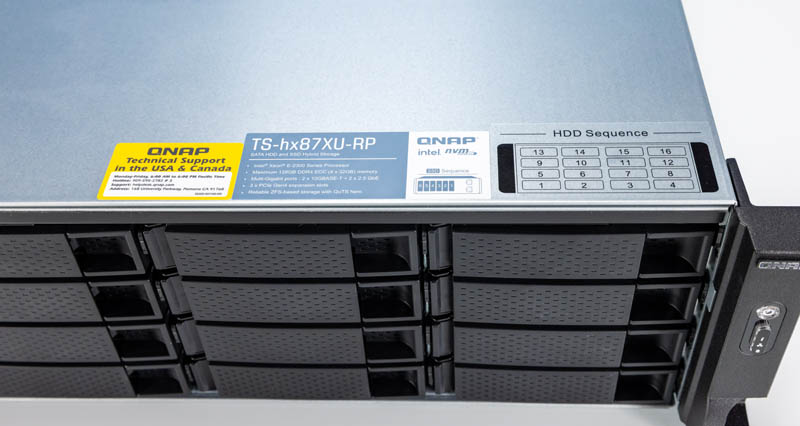
Moving to the back of the unit, things get exciting.
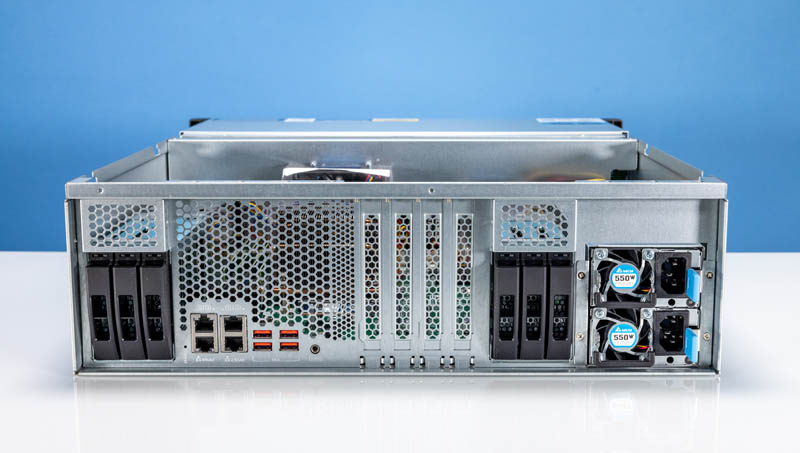
On the left, we get 3x 2.5″ drive trays. We used these for SATA SSDs. These are not NVMe capable. The networking is also exciting. We get two 10Gbase-T 10GbE ports and two 2.5GbE ports. It is great to see the minimum networking is now 2.5GbE.
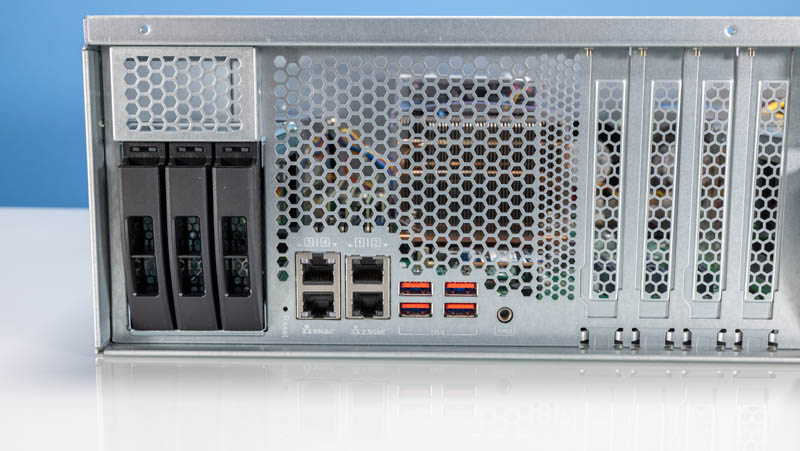
Next to the networking, we get two USB 3.2 Gen 2 ports (10Gbps) and a serial console port that we expect few users to ever touch.
In the middle, we get our I/O expansion slots, more on how PCIe expansion works when we get inside. On the right, there are another three 2.5″ SATA bays for a total of six. That means we get 16x 3.5″ front bays and 6x 2.5″ rear bays.
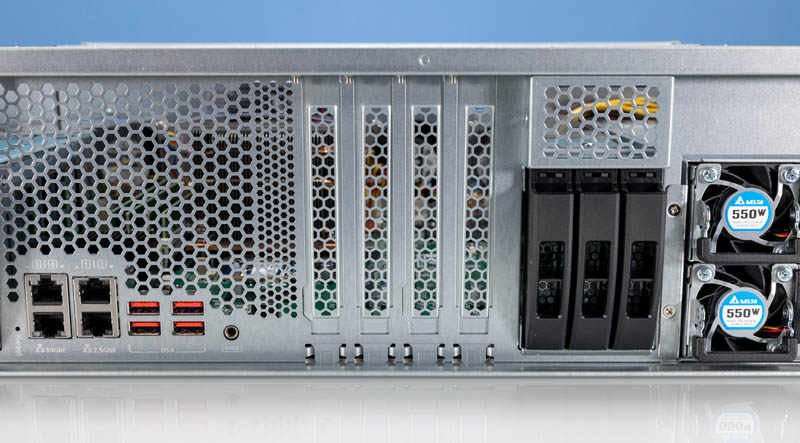
Unfortunately, even though these are 2.5″ SATA bays, we still have drive screws, a total of 24x drive screws just for the rear.
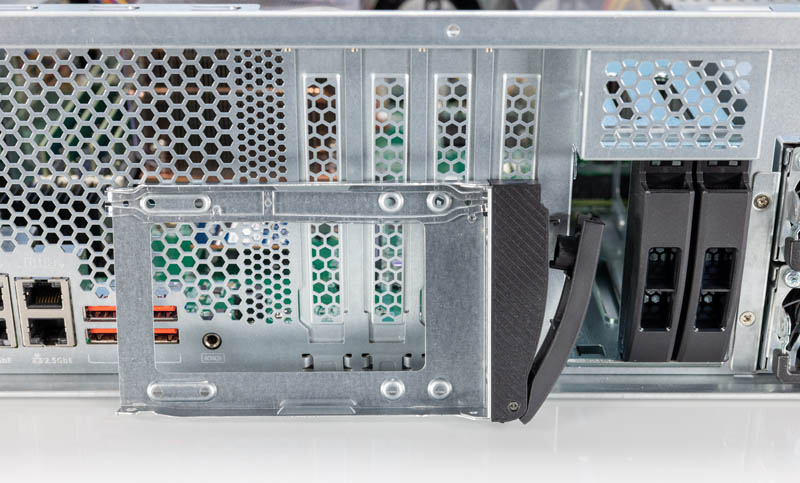
Power is provided by two Delta 550W units. We were very impressed that these are not just Delta power supplies, but carry an 80Plus Platinum rating as well.
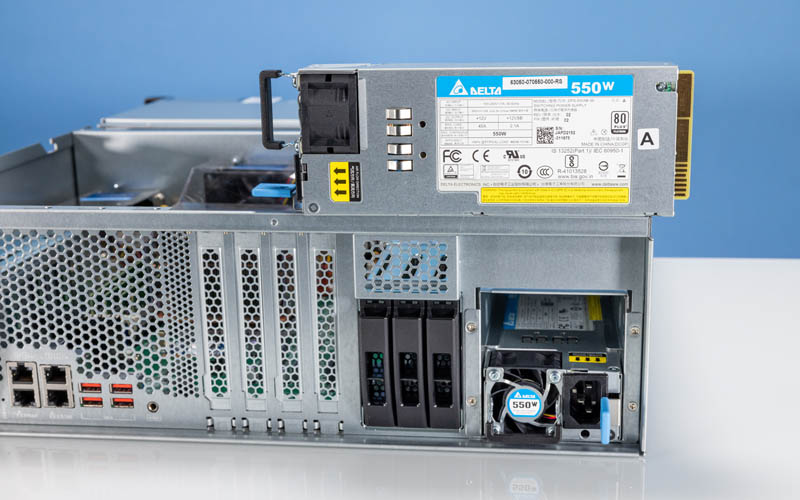
Next, let us get inside the system to see how this all works.

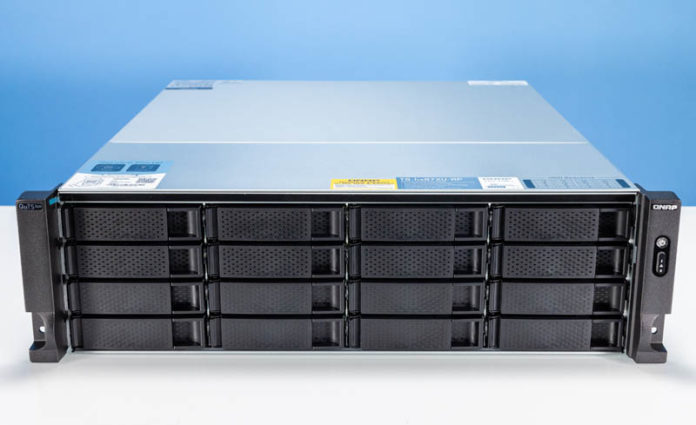



With a NAS appliance designed to run a proprietary software stack, i.e. QTS and QuTS Hero, an overview of software capabilities might be useful. My only QNAP experience is with QTS. I can’t remember if Active Directory authentication for CIFS shares was possible but it definitely didn’t support Kerberized NFSv4. After an update rendered the iSCSI targets inaccessible to about half the Linux clients, it seemed to me the weakest link was the software.
While ZFS is great, does QuTS Hero have features that allow easy integration with Kerberos and Active Directory?
More generally, since there’s no need for enterprise-level hardware without enterprise-capable software, would it be possible to comment a bit more on the software in these reviews?
No Lights Out Management would be a deal breaker in many enterprise envirrments.
I just like that there is a balanced review that actually talks about good, bad, and competition. There’s too many useless reviews.
I don’t care about iLO on these but I don’t want to spend this kind of money on a NAS, have nagging subscriptions, and do drive screws. It’s never a good day when a drive fails and it’ll just be worse having to pull replace 8 screws that day too
This seems like a missed opportunity. QNAP going off and doing their own thing is all well and good when you need something a trifle atypical(their offerings that have a solid number of drive bays but are still quiet enough to coexist with users; or the NAS-with-video-out variants); but this design lands squarely in storage oriented rack server land; except with less polish. Screws all over the place, some really flimsy looking airflow shrouds, no BMC, 100% SATA so no NVMe for any sort of tiering or SAS so you can slap a drive shelf on it; rack ears aren’t included for $7,000; and so on.
It seems like this would have gone better if QNAP had chosen basically any server vendor you’ve heard of that has a storage-oriented line and had them white-label a model with QNAP’s software loaded on the DoM. Basically any more or less reputable server vendor could have provided some combination of nicer or cheaper.
I’d really expect all 4 ports to be 10g for the price.
this is less than great more like pitiful given the price – don’t fall for false narratives
QNAP is not for serious professionals. I’d rather drag my drives after a train than connect them to this clusterf***.